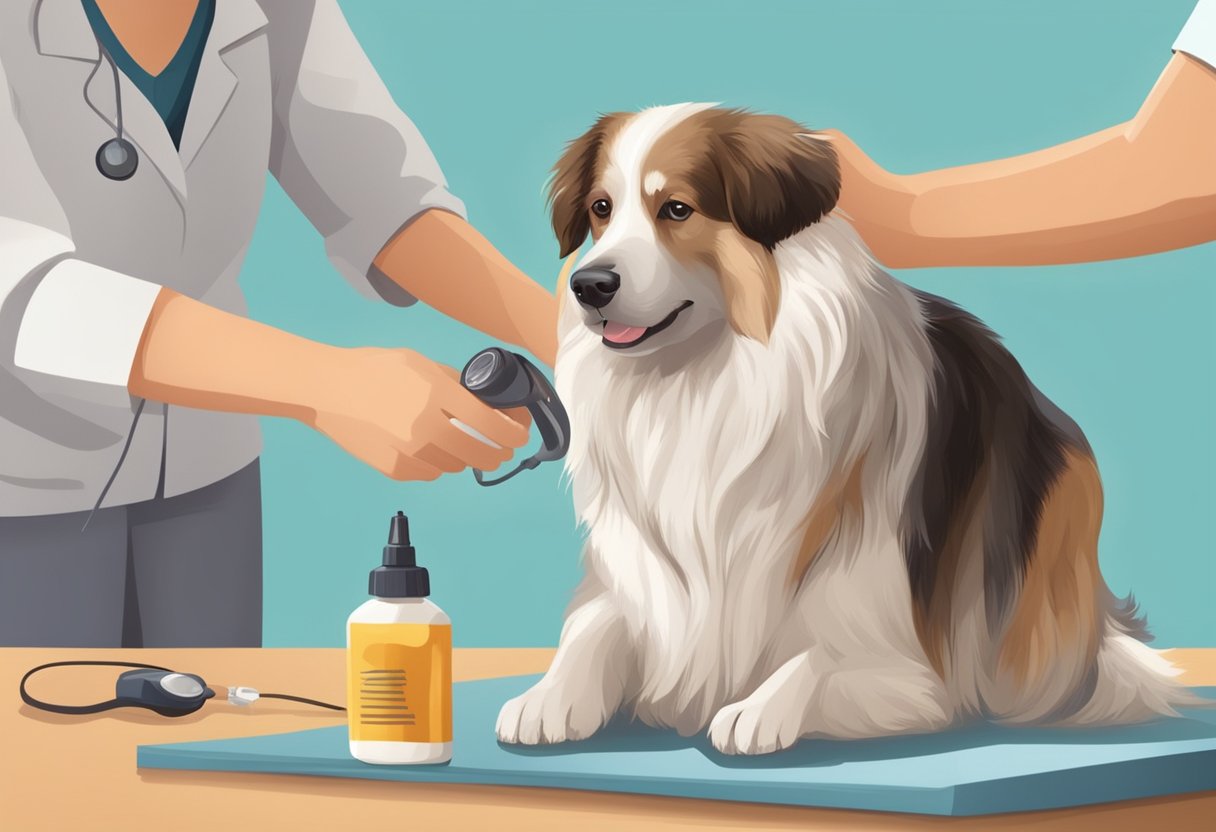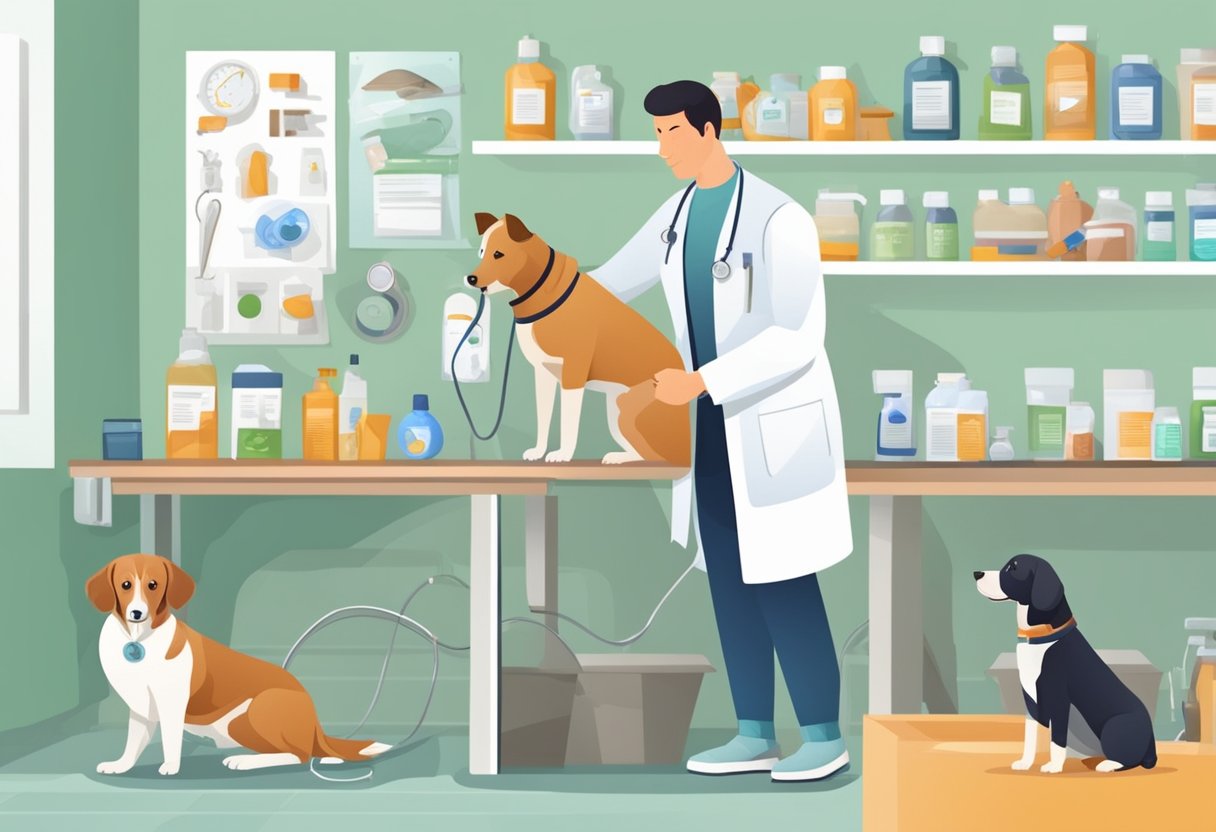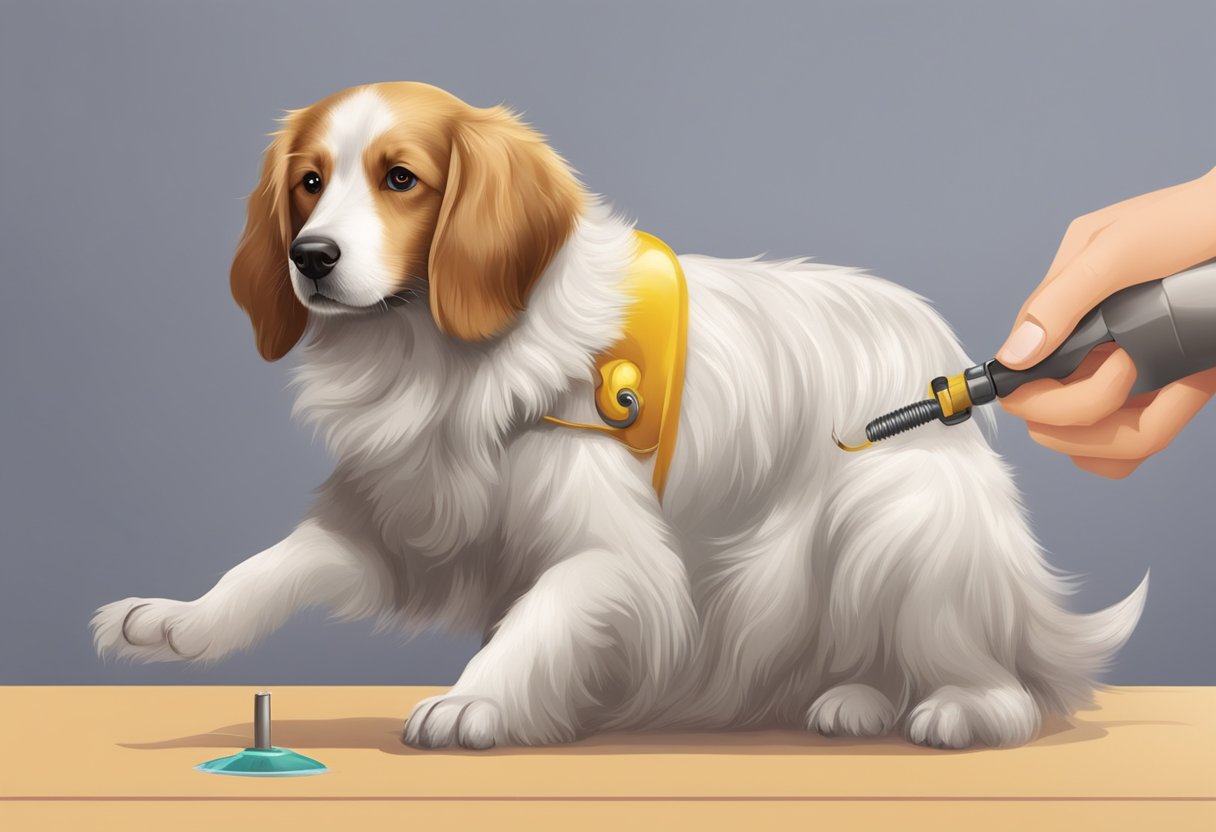Best Flea and Tick Treatment for Dogs: Our Top Picks
Fleas and ticks are common parasites that can cause serious health problems for dogs. These tiny insects feed on your dog’s blood, causing itching, irritation, and even disease. Choosing the right flea and tick treatment for your dog is crucial to keeping them healthy and happy.
There are many different types of flea and tick treatments available, including topical treatments, oral medications, collars, and shampoos. Each type of treatment has its own benefits and drawbacks, so it’s important to do your research and choose the best option for your dog’s needs. Some treatments are more effective than others, and some may be more convenient or easier to use.
In this article, we will explore the best flea and tick treatments for dogs, based on expert recommendations and customer reviews. We will discuss the pros and cons of each type of treatment, as well as their effectiveness and safety. Whether you’re looking for a fast-acting treatment for an active infestation or a long-term preventative measure, we’ve got you covered.
Understanding Fleas and Ticks
Fleas and ticks are common external parasites that can infest dogs. Understanding their lifecycle and the risks associated with infestations can help dog owners choose the best flea and tick treatment for their furry friends.
Lifecycle of Fleas and Ticks
Fleas and ticks have different lifecycles, which can affect the effectiveness of treatment. Fleas have a complex lifecycle that includes four stages: egg, larva, pupa, and adult. Adult fleas lay eggs on the host animal, which then fall off onto the environment. The eggs hatch into larvae, which feed on organic matter and flea dirt. The larvae then spin cocoons and pupate, and emerge as adult fleas when stimulated by heat, carbon dioxide, and vibrations.
Ticks, on the other hand, have a simpler lifecycle that includes three stages: egg, larva, and adult. Adult female ticks lay eggs on the environment, which hatch into larvae. The larvae feed on small animals, molt into nymphs, and feed on larger animals. The nymphs then molt into adults, which feed on larger animals and mate.
Risks of Infestations
Fleas and ticks can cause a variety of health problems in dogs, including skin irritation, anemia, and the transmission of diseases. Fleas can cause flea allergy dermatitis, which is an allergic reaction to flea saliva, and can also transmit tapeworms. Ticks can transmit a variety of diseases, including Lyme disease, Rocky Mountain spotted fever, and ehrlichiosis.
Preventing flea and tick infestations is important for the health and comfort of dogs. Regular grooming, such as brushing and bathing, can help remove fleas and ticks from the coat. Using a flea and tick preventative treatment, such as a topical or oral medication, can also help protect dogs from infestations. It is important to choose a treatment that is safe and effective for the specific dog’s age, weight, and health status.
Types of Treatments
When it comes to flea and tick treatment for dogs, there are several options available. Each type of treatment has its own benefits and drawbacks, and it is important to choose the one that is best suited for your dog’s needs. Here are the most common types of flea and tick treatments for dogs:
Topical Solutions
Topical solutions are applied directly to a dog’s skin, usually between the shoulder blades or at the base of the neck. These treatments are typically effective for up to a month and can help kill fleas, ticks, and other pests. Some of the most popular topical solutions include Advantage Multi for Dogs, Frontline Plus for Dogs, and K9 Advantix II.
Oral Medications
Oral medications are another popular option for flea and tick treatment. These medications come in the form of pills or chewable tablets and are often effective for up to three months. Some of the most popular oral medications include NexGard, Bravecto, and Simparica.
Collars
Flea and tick collars are a convenient option for pet owners who want a long-lasting solution. These collars are typically effective for up to eight months and can help repel fleas, ticks, and other pests. Some of the most popular flea and tick collars include Seresto and Hartz UltraGuard.
Shampoos and Dips
Flea and tick shampoos and dips are another option for pet owners who want to treat their dogs with a topical solution. These treatments are typically effective for up to two weeks and can help kill fleas, ticks, and other pests. Some of the most popular flea and tick shampoos and dips include Adams Plus Flea -amp; Tick Shampoo with Precor, Sentry Flea -amp; Tick Shampoo, and Vet’s Best Flea and Tick Waterless Bath Foam.
Sprays and Powders
Flea and tick sprays and powders are another option for pet owners who want a quick and easy solution. These treatments are typically effective for up to a week and can help kill fleas, ticks, and other pests. Some of the most popular flea and tick sprays and powders include Adams Plus Flea -amp; Tick Spray, Sentry Home Flea and Tick Yard and Premise Spray, and Vet’s Best Flea and Tick Home Spray.
It is important to note that while each type of treatment can be effective, some dogs may have a bad reaction to certain treatments. Always consult with a veterinarian before starting any new flea and tick treatment regimen.
Factors to Consider
When it comes to choosing the best flea and tick treatment for dogs, there are several factors to consider. Here are some of the most important factors to keep in mind:
Dog’s Age and Health
The age and health of your dog should be taken into consideration when choosing a flea and tick treatment. Some treatments may not be suitable for puppies or senior dogs, while others may not be safe for dogs with certain health conditions. It’s important to consult with a veterinarian to determine the best treatment for your dog’s specific needs.
Environment and Lifestyle
The environment and lifestyle of your dog can also play a role in determining the best flea and tick treatment. For example, if your dog spends a lot of time outdoors or in wooded areas, they may be at a higher risk of flea and tick infestations. In this case, a treatment that provides long-lasting protection may be more suitable. Additionally, if you have multiple pets or live in a multi-pet household, it’s important to choose a treatment that is safe for all animals in the household.
Product Efficacy
The efficacy of the flea and tick treatment is also an important factor to consider. It’s important to choose a product that is proven to be effective in killing and repelling fleas and ticks. Some products may only work on certain types of fleas and ticks, so it’s important to choose a product that is effective against the specific types of fleas and ticks that are prevalent in your area.
Safety and Side Effects
The safety of the flea and tick treatment is another important consideration. Some treatments may have potential side effects or may not be safe for dogs with certain health conditions. It’s important to read the label and consult with a veterinarian to ensure that the treatment is safe for your dog. Additionally, it’s important to follow the instructions carefully to ensure that the treatment is applied correctly and safely.
Application Tips
Flea and tick treatments for dogs come in various forms such as oral tablets, topical solutions, and collars. However, applying the treatment correctly is crucial to its effectiveness. Here are some tips to ensure proper application:
Proper Dosage
It is essential to follow the manufacturer’s instructions when administering flea and tick treatments to your dog. The dosage depends on the dog’s weight, age, and health status. Giving too much or too little of the medication can result in adverse effects or ineffective treatment.
Some treatments come in different dosages for different weight ranges, so make sure to choose the correct one for your dog. If in doubt, consult with a veterinarian to determine the appropriate dosage.
Frequency of Treatment
The frequency of flea and tick treatment depends on the type of product and the level of infestation. Some treatments require monthly application, while others can last up to 12 weeks.
It is crucial to adhere to the treatment schedule to ensure ongoing protection against fleas and ticks. Missing a dose or delaying the application can lead to a reinfestation.
Keep in mind that the treatment’s effectiveness may vary depending on your dog’s lifestyle, such as exposure to other animals or outdoor activities. In high-risk areas, more frequent applications may be necessary.
Overall, following the instructions and dosage recommendations, and adhering to the treatment schedule is crucial for the effectiveness of flea and tick treatments. By doing so, you can ensure your dog’s maximum protection against these pests.
Natural and Alternative Remedies
When it comes to flea and tick treatment for dogs, natural and alternative remedies are becoming increasingly popular among pet owners who want to avoid harsh chemicals. Here are two natural remedies that have gained popularity in recent years.
Essential Oils
Essential oils are highly concentrated plant extracts that have been used for centuries for their therapeutic properties. Some essential oils, such as lavender, peppermint, and citronella, are known for their ability to repel fleas and ticks. These oils can be used in a variety of ways, including as a spray, a collar, or a diffuser.
It is important to note, however, that essential oils can be toxic to dogs if not used properly. Some oils, such as tea tree oil, can cause skin irritation, vomiting, and even seizures in dogs. Pet owners should always consult with their veterinarian before using essential oils on their dogs.
Dietary Supplements
Certain dietary supplements can also help repel fleas and ticks. For example, garlic is often touted as a natural flea and tick repellent. However, it is important to note that garlic can be toxic to dogs in large quantities and should be used with caution.
Other dietary supplements that may help repel fleas and ticks include brewer’s yeast, apple cider vinegar, and omega-3 fatty acids. These supplements can be added to a dog’s food or water or given as a treat.
While natural and alternative remedies can be effective in repelling fleas and ticks, it is important to remember that they are not a substitute for traditional flea and tick prevention methods. Pet owners should always consult with their veterinarian before using any natural or alternative remedies on their dogs.
Prevention Strategies
Flea and tick prevention is crucial for your dog’s health. Prevention strategies involve regular grooming and home and yard maintenance.
Regular Grooming
Regular grooming is an essential part of flea and tick prevention. It helps to remove fleas and ticks from your dog’s coat before they can attach to the skin. Brushing your dog’s coat regularly can also help to distribute natural oils throughout the coat, which can help to repel fleas and ticks.
In addition to brushing, you can also use flea combs and tick removers to remove any fleas or ticks that you find on your dog’s coat. These tools are designed to remove fleas and ticks without harming your dog’s skin.
Home and Yard Maintenance
Home and yard maintenance is another crucial part of flea and tick prevention. Fleas and ticks can hide in carpets, bedding, and other areas of your home. Regular cleaning and vacuuming can help to remove fleas and ticks from your home.
You can also use flea and tick sprays or powders to treat your home and yard. These products are designed to kill fleas and ticks on contact and can help to prevent infestations.
It’s also important to keep your yard well-maintained to prevent fleas and ticks from breeding. Keep your grass trimmed, remove any debris from your yard, and avoid leaving standing water, which can attract fleas and ticks.
By following these prevention strategies, you can help to keep your dog healthy and free from fleas and ticks.
Consulting with Veterinarians
When it comes to finding the best flea and tick treatment for dogs, consulting with a veterinarian is an important step. Veterinarians have the expertise and experience to recommend the most effective and safe treatments for dogs. They can also provide guidance on how to properly administer the treatment and what to do if any side effects occur.
During the consultation, it is important to provide the veterinarian with as much information as possible about the dog’s health history, lifestyle, and any previous flea or tick treatments. This information can help the veterinarian make a more informed recommendation.
In addition to recommending a specific treatment, veterinarians can also provide guidance on preventative measures to reduce the risk of flea and tick infestations. This may include tips on keeping the dog’s living environment clean and free of pests, as well as regular grooming and inspection of the dog’s fur.
Overall, consulting with a veterinarian is an important step in ensuring the health and well-being of dogs when it comes to flea and tick treatment. By working with a veterinarian, dog owners can feel confident that they are providing their pets with the best possible care.
Product Reviews and Recommendations
When it comes to selecting the best flea and tick treatment for dogs, it’s important to consider a variety of factors such as the dog’s age, weight, and overall health. Here are some of the top-rated products that have been tested and recommended by experts:
-
Frontline Plus for Dogs: This non-prescription topical treatment is highly effective in preventing fleas and ticks from infesting dogs. It’s easy to apply and provides up to 30 days of protection. The active ingredients in Frontline Plus are fipronil and (S)-methoprene, which kill adult fleas and ticks and prevent the development of flea eggs and larvae.
-
Seresto Flea and Tick Collar: This collar is a popular choice among dog owners because it provides up to eight months of continuous protection against fleas and ticks. The collar is odorless, non-greasy, and water-resistant, making it ideal for dogs that love to swim or play in the rain. The active ingredients in the collar are imidacloprid and flumethrin, which repel and kill fleas and ticks on contact.
-
NexGard Chewables: These soft, beef-flavored chews are a great option for dogs that are difficult to medicate. They provide a month’s worth of protection against fleas and ticks and are safe for dogs weighing at least 4 pounds. The active ingredient in NexGard is afoxolaner, which kills fleas and ticks by targeting their nervous system.
-
Bravecto Chewables: These chewable tablets provide up to 12 weeks of protection against fleas and ticks. They are safe for dogs weighing at least 4.4 pounds and can be used in dogs as young as 6 months old. The active ingredient in Bravecto is fluralaner, which kills fleas and ticks by disrupting their nervous system.
-
Advantage Multi for Dogs: This prescription-only topical treatment is effective against fleas, ticks, heartworms, and other parasites. It’s easy to apply and provides a month’s worth of protection. The active ingredients in Advantage Multi are imidacloprid and moxidectin, which kill adult fleas and ticks and prevent heartworm disease.
Overall, when selecting a flea and tick treatment for dogs, it’s important to consult with a veterinarian to determine the best option for your furry friend. Each product has its own unique benefits and drawbacks, so it’s important to weigh the pros and cons before making a decision.
Frequently Asked Questions
What are the most effective vet-recommended flea and tick preventatives for dogs?
According to veterinarians, the most effective flea and tick preventatives for dogs are prescription-strength oral medications and topical treatments. Products like Bravecto, NexGard, and Simparica are commonly recommended by vets for their ability to kill fleas and ticks quickly and effectively. These preventatives are available only through a prescription from a veterinarian.
How do oral flea and tick preventatives compare to topical treatments for dogs?
Both oral and topical flea and tick preventatives have their advantages and disadvantages. Oral medications tend to be more convenient and easier to administer, as they only need to be given once a month. Topical treatments, on the other hand, may require more frequent application, but they tend to be more effective at repelling fleas and ticks.
What are the potential side effects of flea and tick medications for dogs?
Like any medication, flea and tick preventatives can have potential side effects. Some dogs may experience vomiting, diarrhea, or lethargy after taking an oral medication. Topical treatments may cause skin irritation or hair loss at the application site. It’s important to talk to your veterinarian about any concerns you may have and to follow the instructions for use carefully.
Are there any natural or homeopathic flea and tick treatments that are safe and effective for dogs?
While there are many natural and homeopathic flea and tick treatments available, their effectiveness and safety are often unproven. Some essential oils and other natural remedies can be toxic to dogs, so it’s important to do your research and talk to your veterinarian before using any natural or homeopathic treatments.
How often should flea and tick preventatives be administered to maintain effectiveness?
The frequency of flea and tick preventative administration depends on the product being used. Oral medications are typically given once a month, while topical treatments may need to be applied every two to four weeks. It’s important to follow the instructions for use carefully to ensure that the product remains effective.
What factors should be considered when choosing a flea and tick collar for dogs?
When choosing a flea and tick collar for your dog, it’s important to consider factors such as the size and breed of your dog, the type of collar (chemical or natural), and the length of time the collar will remain effective. It’s also important to follow the instructions for use carefully to ensure that the collar is providing adequate protection.




